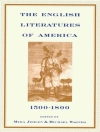The Marrow of Tradition (1901) is a historical novel by African American author, lawyer, and political activist Charles Chesnutt. Based on the Wilmington Insurrection of 1898—in which a group of white supremacists rioted and overthrew the elected government of Wilmington, North Carolina, killing hundreds of African Americans and displacing thousands more—The Marrow of Tradition follows two interconnected families on opposite sides of the violence.
Set in the fictional city of Wellington, the story begins with Major Carteret, a white newspaper owner whose colleagues and powerful peers are growing increasingly outraged by widespread condemnation of local lynchings. At the same time, a black physician named William Miller is establishing a local medical practice while settling into married life with his wife, Janet, the unacknowledged half-sister of Major Carteret’s wife. When Polly Ochiltree, a local white woman, is murdered, a black servant named Sandy Campbell is initially accused. When the identity of the true killer—a white aristocrat—is discovered, however, and when authorities fail to arrest him, the racial tensions dominating Wellington reach their breaking point. The Marrow of Tradition is a harrowing story of family, race, and identity which brilliantly dissects the historical events of the Wilmington Insurrection without sensationalizing them. Although Chesnutt hoped that his book would help to improve race relations in the United States, the book was a commercial and critical failure. For readers today, however, the novel is a picture of how far we have come, and a chilling reminder of how far we have left to go.
This edition of Charles Chesnutt’s The Marrow of Tradition is a classic of African American literature reimagined for modern readers.
Since our inception in 2020, Mint Editions has kept sustainability and innovation at the forefront of our mission. Each and every Mint Edition title gets a fresh, professionally typeset manuscript and a dazzling new cover, all while maintaining the integrity of the original book.
With thousands of titles in our collection, we aim to spotlight diverse public domain works to help them find modern audiences. Mint Editions celebrates a breadth of literary works, curated from both canonical and overlooked classics from writers around the globe.
About the author
Charles W. Chesnutt (1858-1932) was an African American author, lawyer, and political activist. Born in Cleveland to a family of “free persons of color” from North Carolina, Chesnutt spent his youth in Ohio before returning to the South after the Civil War. As a teenager, he worked as a teacher at a local school for Black students and eventually became principal at a college established in Fayetteville for the purpose of training Black teachers. Chesnutt married Susan Perry—with whom he had four daughters—in 1878 and moved to New York City for a short time before settling in Cleveland, where he studied law and passed the bar exam in 1887. His story “The Goophered Grapevine, ” published the same year, was the first story by an African American to appear in The Atlantic. Back in Ohio, Chesnutt started the court stenography business that would earn him the financial stability to pursue a career as a writer. He wrote several collections of short stories, including The Conjure Woman (1899) and The Wife of His Youth and Other Stories of the Color-Line (1899), both of which explore themes of race in America and African American identity as well as employ African American Vernacular English. Chesnutt was also an active member of the NAACP throughout his life, writing for its magazine The Crisis, serving on its General Committee, and working with such figures as W.E.B. Du Bois and Booker T. Washington.








![Cover of Jennifer Richards: Elizabeth Singer [Rowe] Cover of Jennifer Richards: Elizabeth Singer [Rowe]](https://static.worldofdigitals.com/thumb_webp/931/9781351940931.webp)



